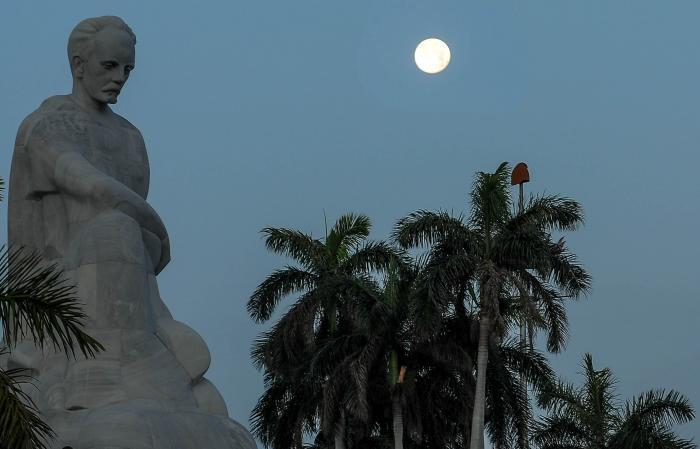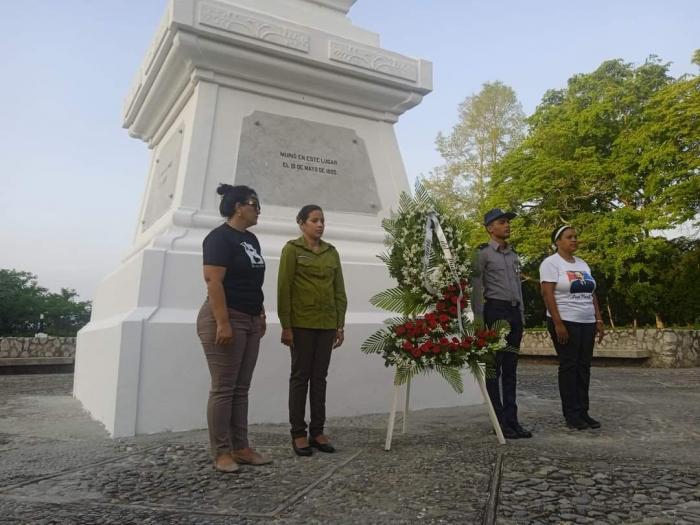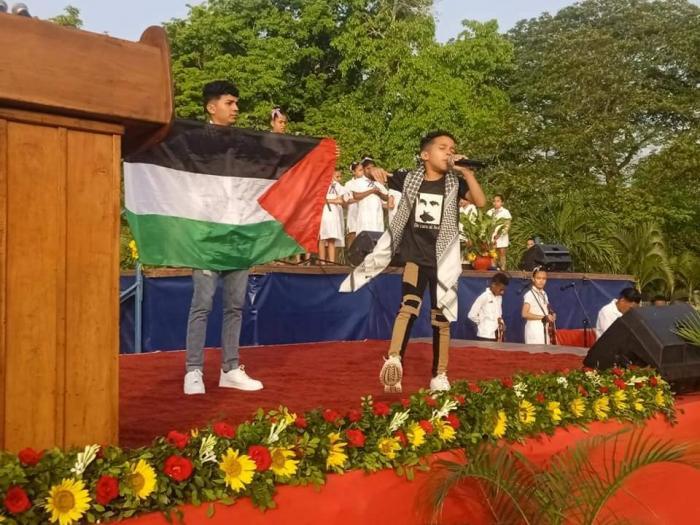
In our Homeland without a master, the signs of affection for José Martí are everywhere: a representation of the people of Santiago, headed by the main political and governmental authorities of the province, arrived yesterday at the Mausoleum that houses the remains of the Apostle in the patrimonial cemetery of Santa Ifigenia, to pay tribute to him, 129 years after his fall in combat.
At the military ceremony and honor guard, the leader of the Cuban Revolution, Army General Raúl Castro Ruz -who was part of the Generation that did not allow the Apostle to die in the year of his Centennial-, sent a wreath, accompanied by those of the First Secretary of the Central Committee of the Party and President of the Republic, Miguel Díaz-Canel Bermúdez; the President of the National Assembly of People's Power and the Council of State, Esteban Lazo Hernández; and the one placed on behalf of the people of Cuba, on the slab where the flag is also placed.

Likewise, in the Granma territory of Dos Rios, the sacred land that the most universal of Cubans fertilized with his blood for the freedom of the homeland, was the site of recount and tribute.
Victor Hernandez Torres, deputy director of the Marti Program Office and vice president of the Jose Marti Cultural Society, presented the call to commemorate, next year, the 130th anniversary of the fall in combat of the Man of the Golden Age, with the day De cara al sol, which will exalt Marti as that moral sun that illuminates Cuba every day.
















